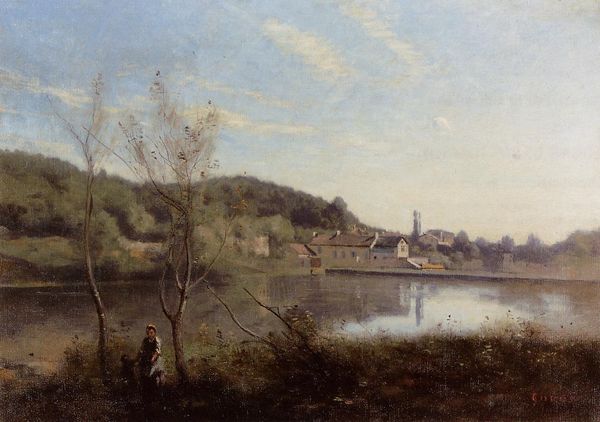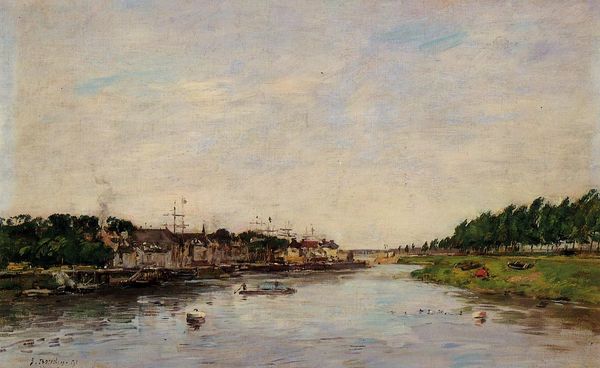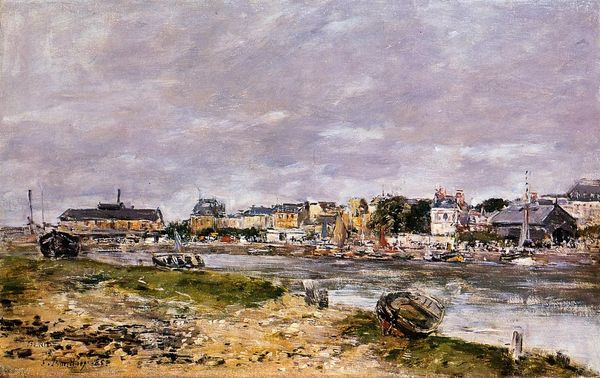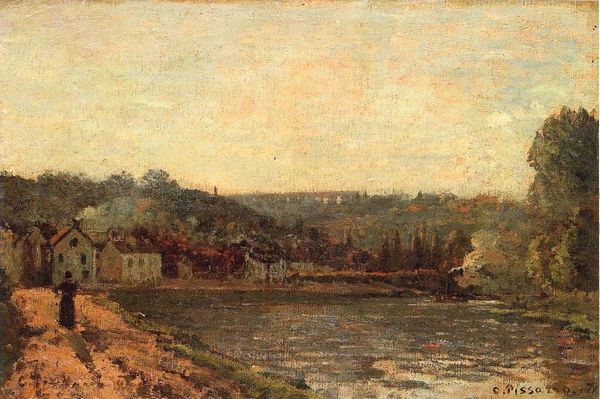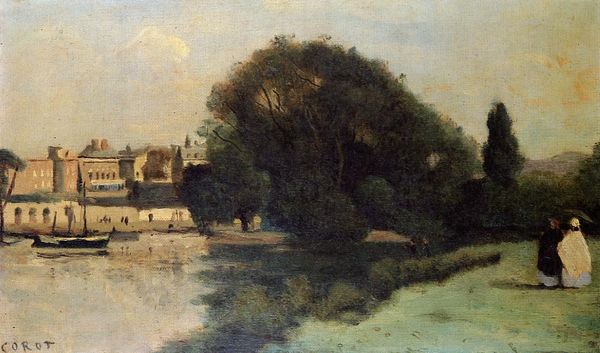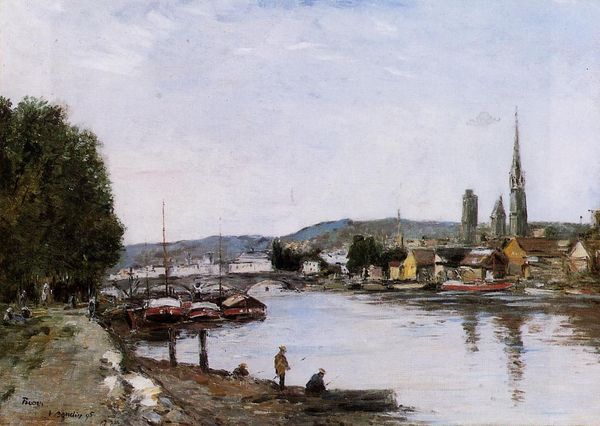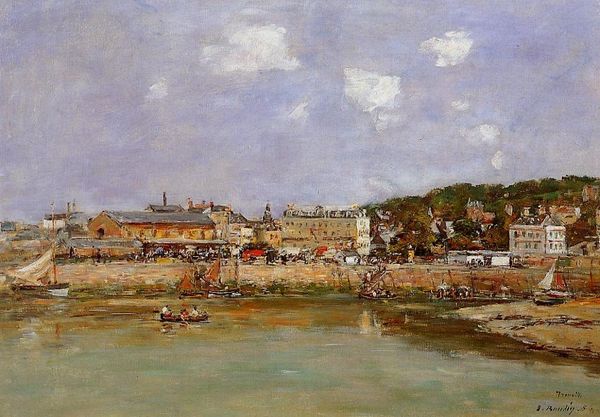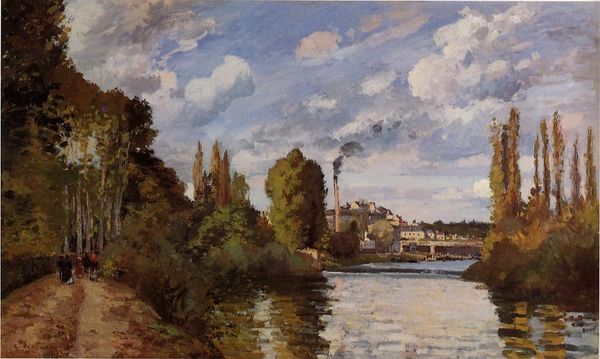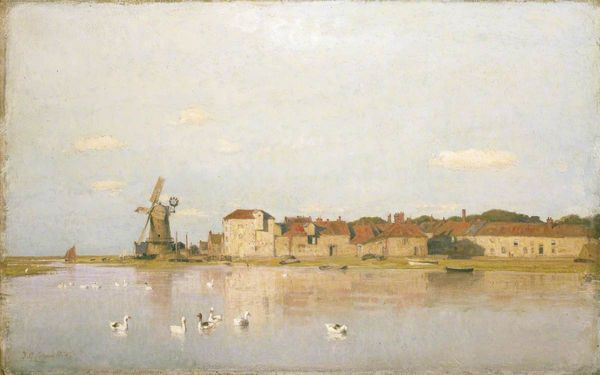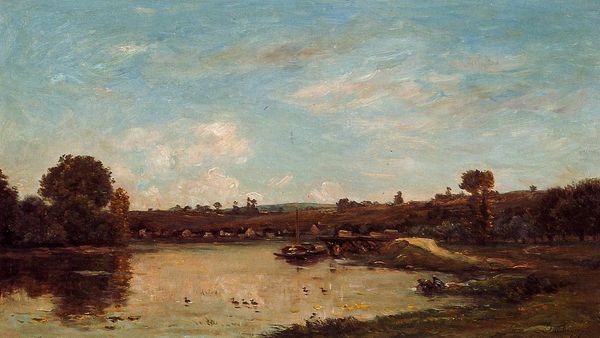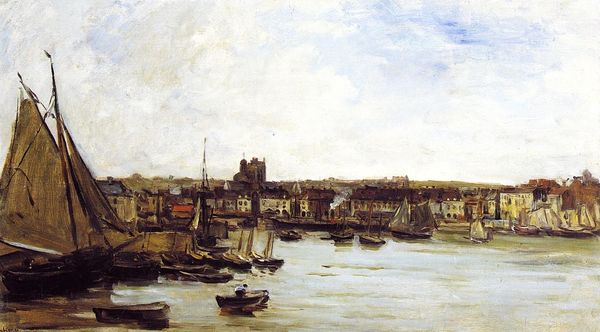
Copyright: Public domain
Curator: Before us hangs Eugène Boudin's "The Rocks of l'Ilette and the Fortifications," painted in 1893. It is held in a private collection. Editor: It evokes a tranquil industrial moment, right? There's a sense of place here, but one being subtly transformed by labor and economy. I am drawn to how present and dominant the reflections in the water are! Curator: Absolutely, let's think about what the means of production tell us here. Boudin, an early forerunner of Impressionism, created this en plein air, capturing the transient effects of light on the harbor and city. He was focused on portraying the social landscape and what he saw first hand, of a changing world. Editor: What strikes me are the materials themselves. The visible brushstrokes, that soft, almost blurry rendering... It softens the starkness of industrial change. You can see this emphasis when one compares this approach of Boudin, the materiality of pigment laid onto canvas as his act of labor, as equal to that of all others. Curator: That perspective complicates conventional narratives about Boudin's coastal scenes. How do the depicted class structures interact? What is the position of the artist here, documenting these lives? The painting acknowledges a world shaped by economic activities. It is worth questioning who exactly owns the view in this canvas, or whose histories are not being represented at all. Editor: You're absolutely right, but by presenting such processes he isn’t glorifying them but making viewers ask these very questions! Looking at the surface, the deliberate looseness challenges traditional notions of what labor art means, what should and shouldn’t be the focus, allowing viewers to become self aware. Curator: Ultimately, Boudin's "The Rocks of l'Ilette" offers a fascinating study in place, and in class, prompting us to consider not just the aesthetic qualities, but the economic, social, and identity contexts from which this work—and these changing spaces—emerged. Editor: And when we return to materials we see an ongoing historical transition within the world, reflecting change. Boudin's canvas itself bears the material traces of an artist navigating—and showing—his own modern era of industry.
Comments
No comments
Be the first to comment and join the conversation on the ultimate creative platform.

